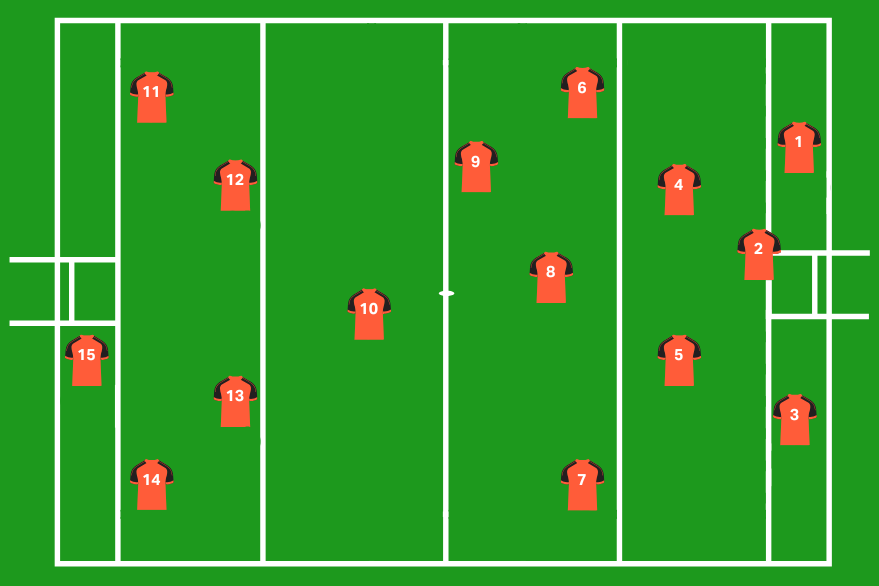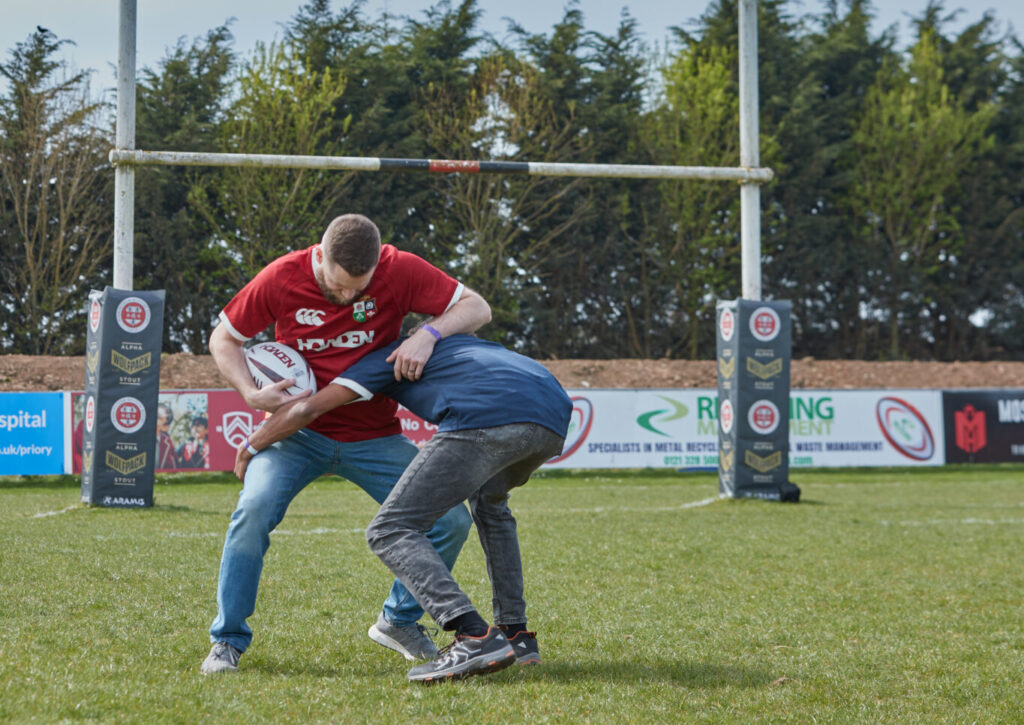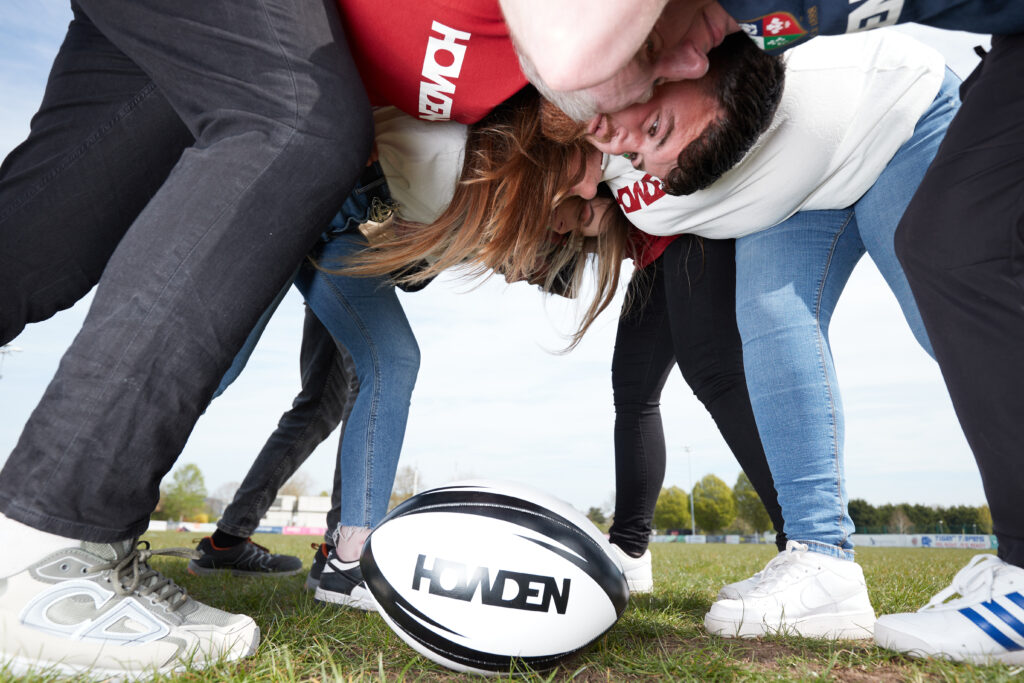So, you want to know how to play rugby? Okay, maybe you don’t want to play – after all it’s an intensely physical sport, known for big hits and mud-splattered jerseys.
Whether you’re watching from the sofa, the stands, or just trying to keep up with your rugby-mad mates, understanding the basics can make it a whole lot more fun. As a Principal Partner of The British & Irish Lions, we’re here to break it all down – no jargon, no confusion – just the basics of the game so you can cheer, groan, and celebrate like a pro. This guide will help you follow every tackle, try, and triumph.
To put it simply
First things first, in rugby the rules are known as ‘laws’, not rules. So here are the main laws you need to know. A game of rugby is two teams of 15 trying to outscore each other over the course of 80 minutes. You score by placing the ball behind the opposition’s try-line (a try) or kicking the ball between the H-bar. There are a few ways to do this, but we’ll get into kicking later.
And crucially, you can only pass the ball backwards. Even an accidental forward drop or nudge (knock-on) can result in a penalty.
The players
Each team is split into two – the Forwards and the Backs. The Forwards (numbers 1-8) are typically larger and stronger, responsible for tackling and rucking. The Backs (numbers 9-15) are usually lighter and more agile, creating plays throughout the game.

The Forwards include:
Prop (#1, #3) – provides power on each side of the scrum, absorbing most of the force.
Hooker (#2) – ‘hooks’ and collects the ball during a scrum and throws the ball back into play during line-outs.
Second Row (#4, #5) – Adds extra power during the scrum, receives the ball from the hooker and delivers it to the scrum-half.
Flanker (#6, #7) – Their role is to win and maintain possession of the ball.
Number8 (#8) – Executes big tackles and carries the ball through the defensive line, providing essential support to the Backs.
The Backs include:
Scrum Half (#9) – Links the Forward and Back players, controlling the tempo of the game with key passes and kicks.
Fly Half (#10) – Makes runs, kicks and passes that initiate attacks by other Backs.
Wingers (#11, #14) – Fast finishers who evade defenders and chase down dropkicks.
Inside Centre (#12) – Has a key role, carrying the ball, winning collisions and earning crucial yards up the field.
Outside Centre (#13) – Exploits the opposition’s defensive space to create attacking opportunities.
Full Back (#15) – The last line of defence, they tackle the opposition and counter and deep-field kicks.
What happens during a game?
Tackling
Players wrap their arms around the ball carrier to bring them down safely—high or dangerous tackles result in penalties or cards.

Scrum
It’s time to heave! Forwards from both teams bind and push to gain possession of the ball after minor infractions, with the scrum-half feeding it in.

Ruck
Formed after a tackle, players compete on their feet over the ball to secure possession, ending when the ball is played or a penalty is given.
Maul
Occurs when the ball carrier is held up but not brought down—teammates bind on and drive forward with the ball off the ground.
Lineout
When the ball goes out of bounds, all players line up at 90° to the touchline. Whichever team didn’t move the ball out of play throws it back in – the teams lift a player in the air to catch the ball and win possession.
Scoring
Penalty kick
Given after serious fouls—kicked from a tee through the goalposts for 3 points.
Drop goal
A player drops the ball and kicks it as it bounces—if it goes through the posts, it scores 3 points.
Try
Scored by grounding the ball on or behind the opponent’s try line.
Conversion
After a try, the scoring team gets a free kick—if it’s kicked between the posts and over the bar, they earn 2 extra points.
Infractions (aka rule-breaking)
Offside
A player is offside if they’re in front of the ball or the teammate who last had it—this gives an unfair advantage and leads to a penalty.
Advantage rule
If a minor foul happens but the non-offending team is doing well, the referee lets play continue (called “advantage”). If no benefit comes from it, the ref stops play and goes back to the original foul.
Punching
Any kind of hitting—punches, elbows, or strikes—is not allowed and results in serious penalties.
Collapsing a maul
Players must stay upright and bind properly in a maul. Deliberately collapsing it, especially by the defending team, is not allowed.
Penalties are given for serious offenses such as these. They can be taken in several ways:
- Kick to touch (team gets a lineout).
- Kick for goal (worth 3 points if successful).
- Quick tap to restart play.
- Choose a scrum instead.
Serious or repeated rule breaking can lead to a yellow card, which means a10-minute suspension. The player heads off into the Sin Bin. A red card for dangerous play means the player is sent off for the rest of the game.
Join in the excitement at Howden!
There’s set to be many more memorable moments this summer as The British & Irish Lions take on Australia, so why not join in the fun with your local Howden branch? We’re working with clubs across the country to celebrate the tour, so check out what your branch is up to here.
Sources: World Rugby
You could also read:
- Is car insurance finally going down?
- Boomers vs millennials – who found house buying harder?
- Tax as you go – no more paperwork!
- Car insurance prices drop 23% for young drivers!
- Five hidden costs that could derail your holiday!
This is a marketing blog by Howden Insurance.

